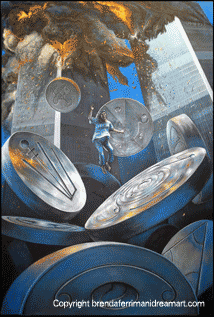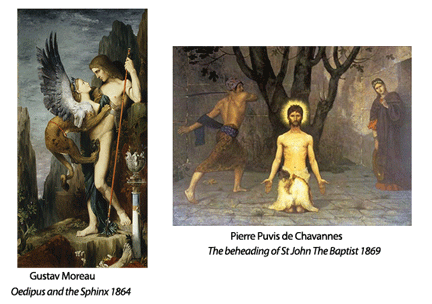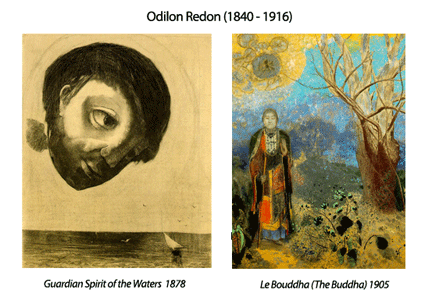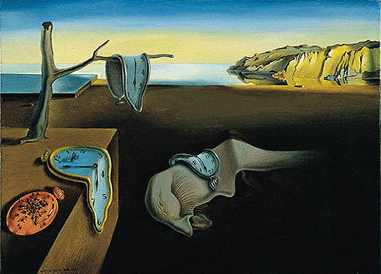Dream Art and Creative Dreaming

Click here to go directly to our dream art gallery
Dream art draws on unconscious inspiration through dreams to create unique and personal art.
Throughtout history many creative and scientific minded people have been able to tap into the unconscious minds potential finding answers to theorems, figuring out mathematical equations, writing song melodies, and developing characters for novels – all from their dreams.
In the realm of visual arts which is our focus here, artists for many years have grappled with the idea of the real versus the unreal, and have visually explored the blurred boundaries between reality and dreams.
Artists such as Gustave Moreau, (1826-1898), Pierre Puvis de Chavannes (1824 – 1898), and Odilon Redon (1840-1916), who laid the foundations for the later art movement of Symbolism, are such artists.

Through their desire to give spiritual meaning to their artwork, these artists produced imaginary dream worlds polluted with mysterious mythological and biblical figures as well as fantasy creatures.
These artists and the symbolists to come from 1880 onwards wanted to escape from reality expressing their personal dreams and visions through color, form and composition.
Frenchman Odilon Redon is a perfect example of an artist at this time, torn between the worlds of the real and the imagined.

Redon created a world of haunting fantasy creatures, inspired by his dreams. Such works as “Guardian Spirit of the waters” 1878 awaken a dream like feeling in the viewer.
Perhaps the most prominent art movement to incorporate dream work and the unconscious into their core was the Surrealist movement.
Being no coincidence that this art movement paralleled the advent of dream psychology, the surrealists were heavily influenced by Sigmund Freud and his theories about the unconscious mind.
Founded by Andre Breton in 1924, it is similar to the symbolist movement of the late 19th century but now artists had the advent of the unconscious mind and Freuds workings with dreams to inspire them.
Some well know surrealists you may of heard about are:
Max Ernst (1891–1976)
Giorgio De Chirico (1888–1978)
Man Ray (1890–1976)
Joan Miro (1893–1983)
Rene Magritte (1898–1967)
Yves Tanguy (1900–1955).
However, Salvador Dali (1904-1989), is perhaps the most well know artist from the Surrealist movement. Being heavily influenced by Freud, Dali’s art fuses fantasy worlds and reality into one, creating hauntingly dreamlike scenes of melting faces and deformed figures being held up by crutches.
One can see through his artwork Dali’s fascination with the fleeting state of mind between sleep and consciousness, dream and reality, sanity and insanity.
Dali’s photo realistic technique of painting allowed him to really capture the haunting feeling of dreams. Dali himself described his paintings as “handmade dream photographs.”
With "The Persistence of Memory" Dali presents familiar objects in illogical settings. The unreal and hallucinatory feeling of dreams is captured with the image of the clock melting into the surroundings. One is not quite sure where reality ends and dreaming begins.

Surrealism and the advent of the concept of the unconscious paved the path for new explorations into dream art. More and more modern artists are exploring their dreams and using them as visual inspiration. Check out our dream art gallery here, to see some of the many talented artists currently working with their dreams through their art.
Return to the Home Page
